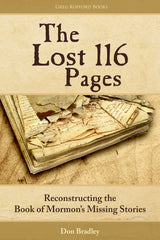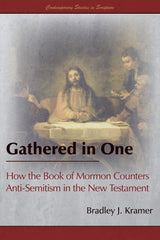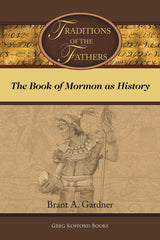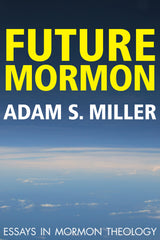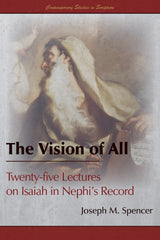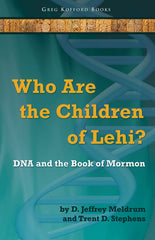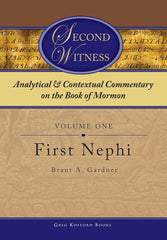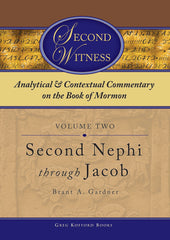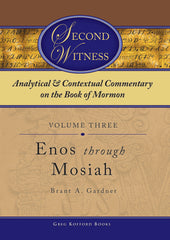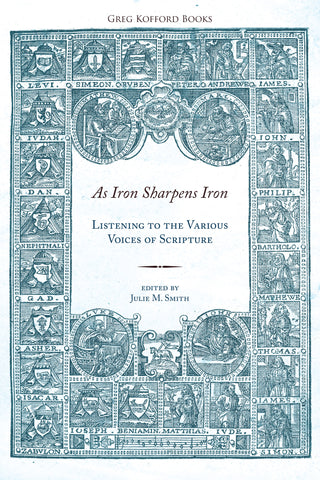News
New Year's Ebook Flash Sale December 27 2021
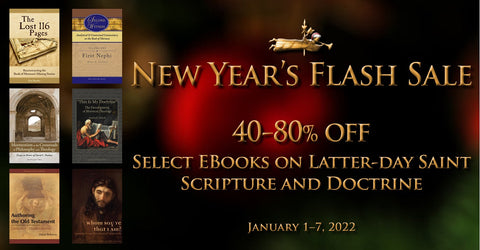
As we welcome 2022, we are pleased to offer discounted prices on select ebooks on scripture and doctrine. This sale runs from January 1–7 and is available for Kindle and Apple ebooks.
Sale ends Friday, Jan 7.
|
|
Scripture |
|
|
$27.99 |
$29.99 |
$29.99 |
|
$29.99 |
$29.99 |
$29.99 |
|
$29.99 |
$22.99 |
|
|
$18.99 |
$25.99 |
$27.99 |
|
$17.99 |
$20.99 |
$17.99 |
|
$22.99 |
$9.99 |
|
|
$22.99 |
$23.99 |
|
|
|
Doctrine |
|
|
$16.99 |
$16.99 |
|
|
$23.99 |
$23.99 |
|
|
$22.99 |
$9.99 |
|
|
$16.99 |
$22.99 |
|
|
$18.99 |
$22.99 |
New Year's Ebook Flash Sale December 29 2020

As we welcome 2021, we are pleased to offer discounted prices on select ebooks on scripture, doctrine, and community. This sale runs from January 1–4 and is available for both Kindle and Apple ebooks.
Sale ends Monday, Jan 4.
Doctrine| Scripture | ||
|
$17.99 |
$27.99 |
$22.99 |
|
$18.99 |
$22.99 |
$23.99 |
| Doctrine | ||
|
$30.99 |
$17.99 |
$9.99 |
|
$26.99 |
$16.99 |
$18.99 |
| Community | ||
|
$18.99 |
$14.99 |
$18.99 |
|
$23.99 |
$18.99 |
$9.99 |
Spring Flash Sale: Up to 88% off Select Ebooks March 24 2020
Stay at home with a great book and help take the pressure off delivery services by going paperless. From now through Easter, download select ebook titles for 30% to 88% off regular price.
Sale ends Monday, 4/12/2020
****NOTE: Due to an error, the discounts for the Kindle ebooks of Second Witness volumes 5 and 6 were not applied. They should be available at the discounted rate by Sunday*****
Insightful messages on justice, mercy, hope, community, and inspiring outlooks on the future during these difficult times. Discounted right now to just $1.99 (up to 88% off regular retail price).
|
$9.95 |
$16.99 |
$16.99 |
The message of Jesus is one of hope and healing. Spend time contemplating the life and mission of the Savior with thought-provoking and inspiring scholarship. Discounted right now to 50% off regular retail price.
|
$23.99 |
$9.99 |

$22.99 |
The Book of Mormon proclaims another witness of the mission of Jesus Christ. Deepen your knowledge and understanding of this sacred book with studies that explore its text, history, and origins. Discounted right now to 30% off regular retail price.
|
$25.99 |
$17.99 |
$20.99 |
|
$22.99 |
$17.99 |
$27.99 |
|
$27.99 |
$22.99 |
$9.99 |
|
$29.99 |
$29.99 |
$29.99 |
|
$29.99 |
$29.99 |
|
Q&A with Bradley Kramer, author of Gathered in One: How the Book of Mormon Counters Anti-Semitism in the New Testament September 16 2019

| Download a free sample preview | Order your copy |
Q: For some, hearing that the New Testament contains anti-Semitic language can be challenging. Can you provide a few examples of anti-Semitic rhetoric in the New Testament?
A: Yes. However, first I would like to clarify that I do not think that the New Testament as a whole is anti-Semitic. I do think that the New Testament contains many anti-Semitic statements, anti-Semitic portrayals, anti-Semitic settings, and anti-Semitic structuring elements that together form a kind of literary tide that pulls its readers towards an anti-Semitic point of view, but that is not the same as saying the entire New Testament is anti-Semitic or that anti-Semitism is its major theme.
The Gospel of John, for instance, not only contains a statement where “the Jews” are told that their father is the devil (John 8:44), but they are portrayed explicitly as questioning Jesus (2:18), as accusing him of being in league with the devil (8:48), and as instilling fear in his followers (7:13; 19:38; 20:19). In this Gospel, “the Jews” function as a foil to everything Jesus stands for and teaches. They are from beneath while Jesus is from above; they are of this world while Jesus is not (8:22-23), and they, unlike the enlightened Jesus, love “darkness rather than light, because their deeds are evil” (3:19).
The Gospel of Matthew reinforces this view of Jews through its portrayal of Pharisees. In this Gospel, Pharisees are hypocritical (Matt. 16:3), judgmental (9:11), rule-bound (12:2), scheming (v.14), stupid (v. 24), sign-seeking (v. 38), superficial (15:1), easily offended (v.12), spiritually blind (v. 14), corrupt (12:33), petty (23:23), tricky (22:15), prideful (16:6), and murderous (12:14). True, the Pharisees are only a subgroup of Jews, but without many examples of other subgroups acting differently, they seem to represent Jews as a totality.
In addition, the Gospel of Matthew uses settings to undermine the viability and validity of Jewish practices. The Last Supper, for instance, is set as a Passover Seder and shows Jesus commenting on two of its most important elements: the bread and the wine. However, in this Gospel, the Mosaic meanings of these elements are not mentioned or discussed as stipulated by the Law of Moses (Ex. 12:25–27). Instead, they are presented simply as food items that have lost their Mosaic meaning and can, therefore, be easily repurposed as memorials of Jesus’s soon to-be-dead body and spilt blood. In this way, the Gospel of Matthew presents Passover, much like the Jews themselves, as something devoid of true spirituality and in need of replacement.
Q: Is there scholarly consensus regarding anti-Semitism in the New Testament? Can you provide examples of scholarly debate on the topic?
A:I think so, yes. Many scholars, however, prefer to use the term “anti-Judaic,” feeling that the New Testament attacks Jews more as members of a certain faith, which can change, than as members of an ethnic or genetic group, which cannot. I have elected to use “anti-Semitic” in my book because 1) most of my sources use that term, 2) “anti-Semitic” is the more common, inclusive term, and 3) in practice the distinction between these two approaches is not always clear—even in the New Testament. Jesus in the Gospel of John, for instance, does not tell “the Jews” that the devil is their spiritual leader; he says that the devil is their “father” (John 8: 44). Similarly, in Matthew the Jewish multitude cries out for his blood to be upon their “children, not upon their religious descendants (Matt. 27:25).
Scholars, as well as many devoted Christian ministers, are disturbed by this scene in the Gospel of Matthew. It seems to brand all Jews throughout time as “Christkillers” and has been used to justify numerous anti-Jewish atrocities. As a result, many of these scholars, ministers, and laypeople deny that it ever happened. They point out that there is no record of any Roman governor ever releasing prisoners on Passover and question the logic of such a custom. After all, why would a Roman official charged with keeping the peace run the risk of releasing his most dangerous enemies back into society? It makes no sense.
These scholars and ministers similarly dispute the Gospels’ portrayal of Pilate as a spiritually ambivalent government official who could be swayed by the voice of a Jewish multitude. According to Roman records, not only did Pilate place Roman images inside the Temple precincts in direct opposition of the will of his subjects, but he also confiscated Temple funds when they refused to pay their taxes. Furthermore, when people gathered before him to protest, he had his soldiers disguise themselves, infiltrate the crowd, and slaughter them all.
The majority of scholars and ministers see Pilate as a merciless ruler who would have had no qualms whatsoever about crucifying Jesus. However, by doing so, Pilate presented early Christians with a problem. After all, they had to live and work and worship within the Roman Empire. It would not be wise to paint a Roman official as a murderer, particularly as the murderer of the Son of God. Many scholars and ministers, therefore, see this scene as a fictional embellishment designed to shift the blame for Jesus’s death from the Romans to the already despised Jews.
Q: Can you provide an example or two of how the Book of Mormon counters anti-Semitism in the New Testament?
A: I can think of no more powerful condemnations of anti-Semitic behavior than these:
O ye Gentiles, have ye remembered the Jews, mine ancient covenant people? Nay; but ye have cursed them, and have hated them, and have not sought to recover them. But behold, I will return all these things upon your own heads; for I the Lord have not forgotten my people. (1 Ne. 29:5)
Yea, and ye need not any longer hiss, nor spurn, nor make game of the Jews, nor any of the remnant of the house of Israel; for behold, the Lord remembereth his covenant unto them, and he will do unto them according to that which he hath sworn. (3 Ne. 29:8)
Furthermore, these are not simply official declarations issued by a church or statements from an ecclesiastical leader. In the former, it is God who chastises non-Jews (probably Christians) for persecuting Jews; and in the latter, it is Mormon, a prophet of God, who commands these same Christians to cease oppressing the Jews.
Also, notice that these condemnations do not comment upon any particular passage in the New Testament, nor do they challenge the veracity of any specific New Testament event. However, given their clarity of expression, they make it very difficult for Christians to interpret the New Testament anti-Semitically.
In this way, the Book of Mormon does not change the New Testament’s words or call into question their ability to convey divine messages to their readers directly. However, for believers, it alters how the New Testament’s words are understood. When joined with the New Testament in the Christian canon, the Book of Mormon overwhelms the anti-Semitic statements, portrayals, settings, and structural elements with more numerous and more sweeping pro-Jewish statements, portrayals, settings, and structural elements of its own. In this way, the Book of Mormon turns the literary tide in the New Testament and causes it to flow in the opposite direction.
Q: How does the Book of Mormon limit Jewish involvement in Jesus’ death?
A: For the most part, the prophets in the Book of Mormon seems more interested in what Jesus’s death accomplished than in who killed him. Nephi, for instance, recounts his vision of Jesus’s death saying only that Jesus “was lifted up upon the cross and slain for the sins of the world” without specifying who did the lifting (1 Ne. 11:33), and Abinadi similarly prophecies that Jesus will be “led, crucified, and slain” again without mentioning who will do the leading, crucifying, and slaying (Mosiah 15:7). The same is true for Samuel the Lamanite (Hel. 13:6) and even Jesus (3 Ne. 11:14).
Furthermore, when these prophets do attempt to identify Jesus’s killers, they use vague terms such as “the world” or “wicked men” (1 Ne. 19:7–10), or they employ phrases that, while they may appear at first to indict all Jews everywhere, actually absolve the majority of Jews of any involvement whatsoever in Jesus’s death. Jacob’s “they at Jerusalem” (2 Ne. 10:5), for example, may seem to some readers to indicate that all Jews participate somehow in Jesus’s crucifixion. These readers link this phrase with “the Jews” in verse 3 and see it as affirming universal Jewish culpability regarding Jesus’s death. However, during Jesus’s lifetime, only a small percentage of the world’s Jews lived in Jerusalem. During that time, most Jews were still residing in Babylon or were scattered throughout the eastern Mediterranean and beyond—as Jacob, who as one of the most far-flung of these Jews, knew very well.
In other words, instead of serving as a synonym of “the Jews,” “they at Jerusalem” functions as the last element in a grammatical sequence that shrinks the number of Jews connected to Jesus’s death from all Jews everywhere to “those who are the more wicked part of the world” to just those Jews living in Jerusalem during the early first century. In a similar way, 2 Nephi 10 also softens “they shall crucify him” of verse 3 to “they . . . will stiffen their necks against him, that he be crucified” and complicates their complicity by stating in verse 5 that they do so not because of some deep-seated personal conviction but “because of priestcrafts and iniquities.”
Q: What is supersessionism and how does the Book of Mormon refute it?
A: Supersessionism is the traditional Christian doctrine that the Jews have been disobedient for so long, failing to follow their own law as well as murdering its originator (Jesus), that their covenantal connection to God has been revoked and they have been replaced by Christian Gentiles. Statements in the Book of Mormon clearly refute this notion by confirming that the Jews remain God’s “covenant people” (2 Ne. 29:4–5) even after Jesus’s death (Morm. 3:21), and by affirming that despite being scattered “upon all the face of the earth,” the Jews will one day be “armed with righteousness and with the power of God in great glory” (1 Ne. 14:14), that they will be delivered from their enemies (2 Ne. 6:17), and that pure people everywhere will seek “the welfare of the ancient and long dispersed covenant people of the Lord” (Morm. 8:15).
In addition to these statements, the portrayal of the Nephites and Lamanites further reinforces the Jews’ ongoing covenantal connection to God. In the Synoptic Gospels, Jews, as Pharisees, are portrayed as so hypocritical and murderous (at least towards Jesus) that it is hard to see them as continuing in God’s covenant. In the Book of Mormon, Nephites also struggle with hypocrisy as do the Lamanites with murder, and yet never are these New World Jews removed from God’s covenant or detached from God’s care. Missionaries go to them, and often they repent, but even when they do not and their civilization disintegrates into self-destructive chaos, God continues to seek after their descendants and sees them always as heirs to the covenantal promises given to Abraham, Isaac, and Jacob.
Q: How should Latter-day Saints relate to Jews?
A: With charity, just like Nephi (2 Ne. 33:8), and not as potential converts. It is significant that the Book of Mormon never uses the words “convert” or “conversion” in connection with Jews. Instead, it employs “persuade” and “convince,” and presents Jesus as the only person authorized to do this persuading and convincing. As he tells the Nephites:
And then will I gather them in from the four quarters of the earth; and then will I fulfil the covenant which the Father hath made unto all the people of the house of Israel. . . . And then will I remember my covenant which I have made unto my people, O house of Israel, and I will bring my gospel unto them. (3 Ne. 16:5, 11)
This repetition of the pronoun “I” in this passage and in 3 Ne. 21:1 indicates to me that Christians should not press Jews to accept Jesus. They should instead have enough faith in their Master to let him do what he has covenanted to do without any help or interference from them.
Christians should embrace Jews as brothers and sisters in God’s covenant, as true friends with whom they can talk, play, work, worship, hang out, enjoy, and learn from, especially in regards to the Scriptures. As Nephi reminds his readers:
I know that the Jews do understand the things of the prophets, and there is none other people that understand the things which were spoken unto the Jews like unto them, save it be that they are taught after the manner of the things of the Jews. (2 Ne. 25:5)
Q: What are you hoping readers will gain through this book?
A: I hope my readers will see more clearly just how the Book of Mormon can augment and enhance the Bible without undermining its scriptural authority or reliability. I hope they will also feel a closer, more informed, more appreciative connection with Jews. I think many Christians are fairly ignorant about Jews and are somewhat split in their opinion of them. Through movies such as “Schindler’s List,” “Denial,” and “The Pianist,” they may feel sympathetic towards Jews because of persecutions they have suffered and the pains they have endured. However, because of the New Testament, they may also be inclined to see Jews as chronic nitpickers who hypocritically follow superficial religious practices.
With this book, I hope to resolve this difference by showing my readers that there is more to the Jews than is offered in the New Testament, that Mosaic practices remain relevant today, that the Law of Moses has been observed admirably by an admirable people; and that Jews have much to teach Christians religiously, ethically, and scripturally. They certainly have taught me much.
Bradley J. Kramer
September 2019
Flash Sale: 40%-63% off Mormon theology titles! October 25 2018
Friday, Oct 26 through Monday, Oct 29. Theology titles by James McLachlan, Blake Ostler, Adam Miller, Joseph Spencer, James Faulconer, Jacob Baker, Blair Van Dyke, Loyd Ericson, Charles Inouye, Charles Harrell, Robert Millet, and more...Q&A Part 2 with the Editors of The Expanded Canon: Perspectives on Mormonism & Sacred Texts September 11 2018

Hardcover $35.95 (ISBN 978-1-58958-637-6)
Part 2: Q&A with Brian D. Birch (Part 1)
Q: When and how did the Mormon Studies program at UVU launch?
A: The UVU Mormon Studies Program began in 2000 with the arrival of Eugene England. Gene received a grant from the National Endowment for the Humanities to explore how Mormon Studies could succeed at a state university. A year-long seminar resulted that included a stellar lineup of consultants and guest scholars. From that point forward, the Religious Studies Program has developed multiple courses complemented by our annual Mormon Studies Conference and Eugene England Lecture—to honor Gene’s tragic and untimely passing in 2001. The program also hosts and facilitates events for independent organizations and publications including the Society for Mormon Philosophy and Theology, the Dialogue Foundation, the Interpreter Foundation, Mormon Scholars in the Humanities, Association for Mormon Letters, and others.
Q: How is the UVU Mormon Studies program distinguished from Mormon Studies programs that have emerged at other campuses?
A: Mormon Studies at UVU is distinguished by the explicitly comparative focus of our work. Given the strengths of our faculty, we have emphasized courses and programming that addresses engagement and dialogue across cultures, faith traditions, and theological perspectives. Permanent course offerings include Mormon Cultural Studies, Mormon Theology and the Christian Tradition, Mormon Anthropology, and Mormon Literature. Our strengths lie in areas other than Mormon history, which is well represented at other institutions—and appropriately so. Given the nature of our institution, our events are focused first and foremost on student learning, but all our events are free and open to the public and we welcome conversation between scholars and nonprofessionals.
Q: How long has the annual UVU Mormon Studies Conference been held, and what have been some of the topics of past conferences?
A: As mentioned above, the Mormon Studies Conference was first convened by Eugene England in 2000, and to date we have convened a total of nineteen conferences. Topics have ranged across a variety of issues including “Islam and Mormonism,” “Mormonism in the Public Mind,” “Mormonism and the Art of Boundary Maintenance,” “Mormonism and the Internet,” etc. We have been fortunate to host superb scholars and to bring them into conversation with each other and the broader public.
Q: Where did the material for the first volume, The Expanded Canon, come from?
A: The material in The Expanded Canon emerged came from our 2013 Mormon Studies Conference that shares the title of the volume. We drew from the work of conference presenters and added select essays to round out the collection. The volume is expressive of our broader approach to bring diverse scholars into conversation and to show a variety of perspectives and methodologies.
Q: What are a few key points about this volume that would be of interest to readers?
A: Few things are more central to Mormon thought than the way the tradition approaches scripture. And many of their most closely held beliefs fly in the face of general Christianity’s conception of scriptural texts. An open or expanded canon of scripture is one example. Grant Underwood explores Joseph Smith’s revelatory capacities and illustrates that Smith consistently edited his revelations and felt that his revisions were done under the same Spirit by which the initial revelation was received. Hence, the revisions may be situated in the canon with the same gravitas that the original text enjoyed. Claudia Bushman directly addresses the lack of female voices in Mormon scripture. She recommends several key documents crafted by women in the spirit of revelation. Ultimately, she suggests several candidates for inclusion. As the Mormon canon expands it should include female voices. From a non-Mormon perspective, Ann Taves does not embrace a historical explanation of the Book of Mormon or the gold plates. However, she does not deny Joseph Smith as a religious genius and compelling creator of a dynamic mythos. In her chapter she uses Mormon scripture to suggest a way that the golden plates exist, are not historical, but still maintain divine connectivity. David Holland examines the boundaries and intricacies of the Mormon canon. Historically, what are the patterns and intricacies of the expanding canon and what is the inherent logic behind the related processes? Additionally, authors treat the status of the Pearl of Great Price, the historical milieu of the publication of the Book of Mormon, and the place of The Family: A Proclamation to the World. These are just a few of the important issues addressed in this volume.
Q: What is your thought process behind curating these volumes in terms of representation from both LDS and non-LDS scholars, gender, race, academic disciplines, etc?
A: Mormon Studies programing at UVU has always been centered on strong scholarship while also extending our reach to marginalized voices. To date, we have invited guests that span a broad spectrum of Mormon thought and practice. From Orthodox Judaism to Secular Humanists; from LGBTQ to opponents to same-sex marriage; from Feminists to staunch advocates of male hierarchies, all have had a voice in the UVU Mormon Studies Program. Each course, conference, and publication treating these dynamic dialogues in Mormonism are conducted in civility and the scholarly anchors of the academy. Given our disciplinary grounding, our work has expanded the conversation and opened a wide variety of ongoing cooperation between schools of thought that intersect with Mormon thought.
Q: What can readers expect to see coming from the UVU Comparative Mormon Studies series?
A: Our 2019 conference will be centered on the experience of women in and around the Mormon traditions. We have witnessed tremendous scholarship of late in this area and are anxious to assemble key authors and advocates. Other areas we plan to explore include comparative studies in Mormonism and Asian religions, theological approaches to religious diversity, and questions of Mormon identity.
Download a free sample of The Expanded Canon
Listen to an interview with the editors
Upcoming events for The Expanded Canon:
Tue Sep 18 at 7pm | Writ & Vision (Provo) | RSVP on Facebook
Wed Sep 19 at 5:30 pm | Benchmark Books (SLC) | RSVP on Facebook
Q&A Part 1 with the Editors of The Expanded Canon: Perspectives on Mormonism & Sacred Texts August 29 2018

Hardcover $35.95 (ISBN 978-1-58958-637-6)
Part 1: Q&A with Blair G. Van Dyke (Part 2)
Q: How is the Mormon Studies program at Utah Valley University distinguished from Mormon Studies programs that have emerged at other universities?
A: The Mormon Studies program at UVU is distinguished by the comparative components of the work we do. At UVU we cast a broad net across the academy knowing that there are relevant points of exploration at the intersections of Mormonism and the arts, Mormonism and the sciences, Mormonism and literature, Mormonism and economics, Mormonism and feminism, Mormonism and world religions, and so forth. Additionally, the program is distinguished from other Mormon Studies by the academic events that we host. UVU initiated and maintains the most vibrant tradition of creating and hosting relevant and engaging conferences, symposia, and intra-campus events than any other program in the country. Further, a university-wide initiative is in place to engage the community in the work of the academy. Hence, the events held on campus are focused first and foremost for students but inviting the community to enjoy our work is very important. This facilitates understanding and builds bridges between scholars of Mormon Studies and Mormons and non-Mormons outside academic orbits.
Q: Where did the material for The Expanded Canon come from?
A: The material that constitutes volume one of the UVU Comparative Mormon Studies Series came from an annual Mormon Studies Conference that shares the title of the volume. We drew from the work of some of the scholars that presented at that conference to give their work and ours a broader audience. Generally, the contributors to the volume are not household names or prominent authors that regularly publish in the common commercial publishing houses directed at Mormon readership. As such, this volume introduces that audience to prominent personalities in the field of Mormon Studies. It is not uncommon for scholars in this field of study to look for venues where their work can reach a broader readership. This jointly published volume accomplishes that desire in a thoughtful way.
Q: What are a few key points about this volume that would be of interest to readers?
A: Few things are more central to Mormon thought than the way the tradition approaches scripture. And many of their most closely held beliefs fly in the face of general Christianity’s conception of scriptural texts. An open or expanded canon of scripture is one example. Grant Underwood explores Joseph Smith’s revelatory capacities and illustrates that Smith consistently edited his revelations and felt that his revisions were done under the same Spirit by which the initial revelation was received. Hence, the revisions may be situated in the canon with the same gravitas that the original text enjoyed. Claudia Bushman directly addresses the lack of female voices in Mormon scripture. She recommends several key documents crafted by women in the spirit of revelation. Ultimately, she suggests several candidates for inclusion. As the Mormon canon expands it should include female voices. From a non-Mormon perspective, Ann Taves does not embrace a historical explanation of the Book of Mormon or the gold plates. However, she does not deny Joseph Smith as a religious genius and compelling creator of a dynamic mythos. In her chapter she uses Mormon scripture to suggest a way that the golden plates exist, are not historical, but still maintain divine connectivity. David Holland examines the boundaries and intricacies of the Mormon canon. Historically, what are the patterns and intricacies of the expanding canon and what is the inherent logic behind the related processes? Additionally, authors treat the status of the Pearl of Great Price, the historical milieu of the publication of the Book of Mormon, and the place of The Family A Proclamation to the World. These are just a few of the important issues addressed in this volume.
Q: What is your thought process behind curating these volumes in terms of representation from both LDS and non-LDS scholars, gender, race, academic disciplines, etc?
A: Mormon Studies programing at UVU has always been centered on solid scholarship while simultaneously broadening tents of inclusivity. To date, we have invited guests that span spectrums of thought related to Mormonism. From Orthodox Judaism to Secular Humanists; from LGBTQ to opponents to same-sex marriage; from Feminists to staunch advocates of male hierarchies, all have had a voice in the UVU Mormon Studies Program. Each course, conference, and publication treating these dynamic dialogues in Mormonism are conducted in civility and the scholarly anchors of the academy. Given our disciplinary grounding, our work has expanded the conversation and opened a wide variety of ongoing cooperation between schools of thought that intersect with Mormon thought.
Download a free sample of The Expanded Canon
Listen to an interview with the editors
Tue Sep 18 at 7pm | Writ & Vision (Provo) | RSVP on Facebook
Wed Sep 19 at 5:30 pm | Benchmark Books (SLC) | RSVP on Facebook
5 Things We Learned About the Jesus of Nazareth January 22 2018
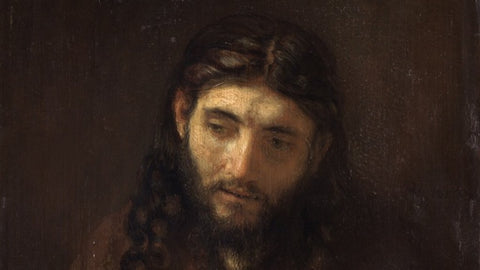
Consider the many different ways Jesus has been portrayed over the centuries or the ways his name has been employed in support of this or that cause. N. T. Wright, a prominent Jesus scholar and Anglican Bishop, observes that he is “almost universally approved of” but for “very different and indeed often incompatible reasons.” If this is the case, then we wondered what Jesus were we worshiping and whether that Jesus was one of our own making?
During the past half-century historians have made significant strides examining the most recently discovered source materials in order to think once again about existing documents like the four Gospels. The aim was to reconstruct the Jesus who the men and women in first-century Palestine would recognize and follow. Jesus was born into an ancient society constrained by millennia of social, theological, and political practices perpetuated by the minority ruling elite and facilitated by a vast majority of souls who knew of no other way. Periodically prophets would rail against the system in the name of God. But the great, colossus of ancient Rome remained sustained through the oppression of individuals, the very individuals that Jesus came to invite into a new, righteous Kingdom.
The Jesus of history and the Gospels largely displaced the conventions of his day with regard to women and the family, as well as the social standing of the poor, the wealthy, and the outcast.
On Women:
In the twenty-first century, when issues regarding the roles of men and women in religious environments are alive and controversial, Jesus’s treatment of women was prescient. His example and the privileges afforded the first female Christians provide important perspectives. The subject takes on added significance as we appreciate the meaning of the priestly roles that women play in Latter-day Saint temples. Echoing what N. T. Wright suggests in his recent book Surprised by Scripture, we must “think carefully about where our own cultures, prejudices, and angers are taking us, and make sure we conform not to the stereotypes the world offers but to the healing, liberating, humanizing message of the gospel.” He continues, “[we live in a time when] we need to radically change our traditional pictures of what men and women are and of how they relate to one another within the church, and indeed of what the Bible says on this subject.”
On the Family:
What little Jesus had to say about the family is jarring to modern ears. He replaced the household of his day with a new universal family called the Kingdom of God where all were brothers and sisters. All were welcome: the poor and the rich, men and women, bond and free, high and low, Jew and Gentile. Members were asked to live in a communal order where everyone had what they needed.
On the Poor:
At the end of Jesus’s ministry, his priorities had not shifted from those he announced by way of the Isaiah text he read as he stood in the synagogue in Nazareth. Prior to his betrayal, Jesus spoke about the Final Judgment. He reminded those who heard him then, as well as those who hear him today, that when our lives are weighed in the balance, we will be judged not on what we know, or how many things we owned, or on how many church meetings we attended; rather, we will be judged on the basis of how well we loved our neighbors, and how well we fed the hungry, clothed the naked, cared for the sick, and visited those in need (Matt. 25:31–46).
On the Wealthy:
Matthew’s Gospel records that Jesus spoke to a “rich young man” who, by his own report, kept all the commandments in Torah, the Mishnah, and the Oral Traditions. Jesus asked him to go one step further and distribute all his wealth equally amongst the poor in order to be a part of God’s kingdom (Matt. 19:21-22). The apocryphal Gospel of Hebrews records that when the young man could not take that step, he “began to scratch his head because he did not like that command.” But then, Mark’s Gospel says, “Jesus felt genuine love for [this man]” (Mark 10:21 NLT).
Father James Martin, in a memoir on his pilgrimage to the Holy Land in 2014, writes about his encounter with the story, standing on the supposed spot where Jesus told it: “Jesus ‘loved him’? Where did that come from? I had heard this Gospel story dozens of times. How had I missed that line? . . . Those three words . . . altered the familiar story and thus altered how I saw Jesus. No longer was it the exacting Jesus demanding perfection; it was the loving Jesus offering [agency]. Now I [and we] could hear him utter those words with infinite compassion for the man. . . . Jesus explicitly offers a promise of abundance to everyone” (Jesus: a Pilgrimage, 271).
Jesus invited all to be bound to him by the “covenant of salt.”
The Covenant of Salt is a three-part obligation. The meaning of the name of the covenant would have been obvious to the men and women who followed him: salt was and is the root word of salvation and it was an enormously valuable commodity in their day. At the end of our study, we came to understand a little better what N. T. Wright observes – that what mattered most to Jesus was that his true disciples were “the kind of people through whom the kingdom will be launched on earth.” Being like Jesus meant that each of us qualified for heaven through serving his “lambs.” Being like Jesus was about loving others and thereby transforming the earth, making it a Godlike place. It was what Jesus earnestly prayed for and by example asked us to pray for: “Thy kingdom come. Thy will be done in earth, as it is in heaven” (Matt. 6:10 KJV; emphasis added). God’s ultimate rule on earth will come about because we, as true disciples of Jesus Christ, are the light of the world and the salt of the earth (Matt.5:13, 14 KJV). We have covenanted. We have come away from this pilgrimage with a resolve to “have salt in ourselves, and have peace one with another” (Mark 9:50 KJV).
James and Judith McConkie will be speaking and signing books at Writ & Vision in Provo, Utah, on Tuesday, January 30 at 7 pm, and at Benchmark Books in Salt Lake City on Wednesday, February 7 at 5:30 pm..These events are free to the public.
 James W. McConkie has JD from the S. J. Quinney College of Law at the University of Utah. His practice has focused in the area of torts and civil rights for more than four decades. He has been an adjunct professor at Westminster College teaching Constitutional law for non-lawyers. He has taught Church History and New Testament courses for BYU’s Division of Continuing Education for over 15 years with his wife Judith and is the author of Looking at the Doctrine and Covenants for the Very First Time. In 2017 he and his law partner Bradley Parker created the Refugee Justice League, a non-profit organization of attorneys and other professionals offering pro-bono help to refugees who have been discriminated against on the basis of their religion, ethnicity, or national origin.
James W. McConkie has JD from the S. J. Quinney College of Law at the University of Utah. His practice has focused in the area of torts and civil rights for more than four decades. He has been an adjunct professor at Westminster College teaching Constitutional law for non-lawyers. He has taught Church History and New Testament courses for BYU’s Division of Continuing Education for over 15 years with his wife Judith and is the author of Looking at the Doctrine and Covenants for the Very First Time. In 2017 he and his law partner Bradley Parker created the Refugee Justice League, a non-profit organization of attorneys and other professionals offering pro-bono help to refugees who have been discriminated against on the basis of their religion, ethnicity, or national origin.
 Judith E. McConkie has an MFA in printmaking from BYU and a PhD in philosophy of art history and museum theory from the University of Utah. She has taught art history at the secondary and then university levels for over 40 years. She was the Senior Educator at BYU’s Museum of Art and Curator of the Utah State Capital during its major renovation project from 2004–2010. During that time she authored With Anxious Care: the Restoration of the Utah Capital. She continues to teach in BYU’s Division of Continuing Education with her husband James. She has published in Sunstone and Dialogue: A Journal of Mormon Though and has presented at Sunstone’s annual symposium. Her prints and watercolors have been exhibited nationally and in the Henry Moore Gallery in London, England. She and James are the parents of three children and 12 grandchildren.
Judith E. McConkie has an MFA in printmaking from BYU and a PhD in philosophy of art history and museum theory from the University of Utah. She has taught art history at the secondary and then university levels for over 40 years. She was the Senior Educator at BYU’s Museum of Art and Curator of the Utah State Capital during its major renovation project from 2004–2010. During that time she authored With Anxious Care: the Restoration of the Utah Capital. She continues to teach in BYU’s Division of Continuing Education with her husband James. She has published in Sunstone and Dialogue: A Journal of Mormon Though and has presented at Sunstone’s annual symposium. Her prints and watercolors have been exhibited nationally and in the Henry Moore Gallery in London, England. She and James are the parents of three children and 12 grandchildren.
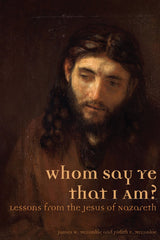 |
Whom Say Ye that I Am? Lessons from the Jesus of Nazareth Available Jan 30, 2018 |
Q&A with James and Judith McConkie for Whom Say Ye that I Am? Lessons from the Jesus of Nazareth December 19 2017
Whom Say Ye That I Am? Lessons from the Jesus of Nazareth
by James W. McConkie and Judith E. McConkie
Available January 30, 2018
Pre-order Your Copy Today
How did both of you become interested in writing about Jesus from a cultural perspective?
For over 15 years we have taught CES together and have enjoyed an ongoing conversation about the gospel. Our daughter attended the BYU study abroad program in Jerusalem. When she returned she started an even more intensive discussion with our family about Jesus -- what he stood for and what he did. This conversation culminated in our desire to write this book together. We have always taught classes together and are stronger when we work as a team.
What do you feel distinguishes Whom Say Ye? from other work written about Jesus, particularly for an LDS audience?
All of us create a Jesus in our own image—a self-validating Jesus. What we mean by that is that there are as many versions of Jesus as there are religions. He is wheeled out in support of almost any “good” cause: socialism, capitalism, pacifism, use of force, government programs to help the poor and not help the poor. He was even used by the South to support slavery during the Civil War and by the North to oppose it.
During the last 20 years or so historical Jesus scholars have stripped away centuries of assumptions about Jesus in an attempt to reveal more closely who he really was, what he thought, what motivated him (made him angry or sad) and what kind of a community he was trying to establish. This book examines the historical Jesus literature and what its implications may be for the Mormon community and other Christian faiths.
We did not want to devise a self-validating Jesus who just happened to agree with our view of things—a Jesus that could make us feel good about whatever we happened to be thinking or doing at the time. Making Jesus in our own image was no God at all, and certainly not one who could save us.
What sources did you rely on for this study?
We decided to use only the four Gospels and preeminent Jesus scholars such as N. T. Wright, Marcus J. Borg, John Dominic Crossan, Bart Ehrman, Raymond Brown, Michael White, Lisa Sergio, Karen Torgesen, Anthony Salderini and others. We also consulted newer alternate translations of the Bible, history texts and a number of respected commentaries.
What is the major focus of Whom Say Ye?
In general, we focus on how Jesus treated and interacted with individuals and then with the institutions of his day: the Jewish religious establishment and the Roman Empire. Almost without exception he was inclusive, compassionate, and forgiving with individuals, and angry and confrontational with institutions that exploited the poor and caused unnecessary human suffering—the social misery caused by cultural structural systems of society.
How has the book changed your understanding and appreciation for Jesus?
In writing this book, we found it reinforced the idea that all men and women everywhere, no matter what religion, culture, race, or background are equally important and valuable in the sight of God. We witnessed in the pages of the four Gospels the deep compassion Jesus had for humankind.
What do you hope readers will take away from the book?
We hope those who read this book find a clearer of view of who Jesus is and what he stands for and a greater desire to be more like he him.
Pre-order Your Copy Today
Twelve Days of Kofford 2017 November 21 2017
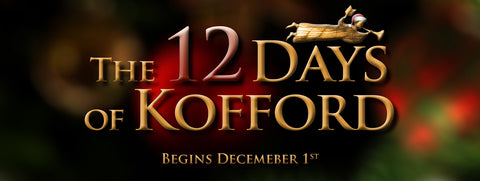
Greg Kofford Books is once again pleased to offer twelve days of discounted holiday shopping from our website!
HERE IS HOW IT WORKS: Every morning from Dec 1th through the 12th, we will be posting a DISCOUNT CODE on our Facebook or Twitter pages. Use this discount code on the corresponding day to receive 30% off select titles. The final day will be an e-book flash sale on Amazon.com.
To help you plan, here are the dates, titles, and sale prices we will be offering beginning Dec 1st. These sales are limited to available inventory. You must follow our Facebook or Twitter pages to get the discount code. Orders over $50 qualify for free shipping. Customers in the Wasatch Front area are welcome to pick orders up directly from our office in Sandy, UT.
Day 1 — Brant Gardner collection
 |
Second Witness, Vol 1: First Nephi $39.95 hardcover |
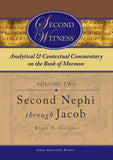 |
Second Witness, Vol 2: Second Nephi through Jacob $39.95 hardcover |
 |
Second Witness, Vol 3: Enos through Mosiah $39.95 hardcover |
 |
Second Witness, Vol 4: Alma $49.95 hardcover |
 |
Second Witness, Vol 5: Helaman through Nephi $39.95 hardcover |
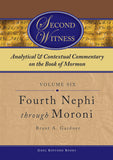 |
Second Witness, Vol 6: Fourth Nephi through Moroni $39.95 hardcover |
 |
The Gift and the Power: Translating the Book of Mormon $34.95 paperback |
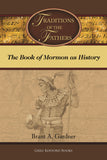 |
Traditions of the Fathers: The Book of Mormon as History $34.95 paperback |
 |
The Garden of Enid: Adventures of a Weird Mormon Girl $22.95 paperback |
 |
The Garden of Enid: Adventures of a Weird Mormon Girl $22.95 paperback |
Day 3 — The Mormon Image in Literature
 |
The Mormoness; Or, The Trials of Mary Maverick: $12.95 paperback |
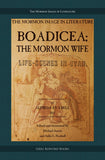 |
Boadicea; the Mormon Wife: Life Scens in Utah $15.95 paperback |
 |
Dime Novel Mormons $22.95 paperback |
 |
Women at Church: Magnifying LDS Women's Local Impact $21.95 paperback |
 |
Mormon Women Have Their Say: Essays from the Claremont Oral History Collection $31.95 paperback |
 |
Voices for Equality: Ordain Women and Resurgent Mormon Feminism $32.95 paperback |
 |
Joseph Smith's Polygamy, Vol 1: History $34.95 paperback |
 |
Joseph Smith's Polygamy, Vol 2: History $34.95 paperback |
 |
Joseph Smith's Polygamy, Vol 3: Theology $25.95 paperback |
 |
Joseph Smith's Polygamy: Toward a Better Understanding $19.95 paperback |
 |
Modern Polygamy and Mormon Fundamentalism: The Generations after the Manifesto $31.95 paperback |
 |
Mormon Polygamous Families: Life in the Principle $24.95 paperback |
 |
Prisoner for Polygamy: The Memoirs and Letters of Rudger Clawson at the Utah Territorial Penitentiary, 1884–87 $29.95 paperback |
 |
Who Are the Children of Lehi? DNA and the Book of Mormon $15.95 paperback |
 |
“Let the Earth Bring Forth”: Evolution and Scripture $15.95 paperback |
 |
Mormonism and Evolution: The Authoritative LDS Statements $15.95 paperback |
 |
Parallels and Convergences: Mormon Thought and Engineering Vision $24.95 paperback |
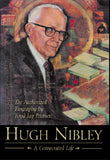 |
Hugh Nibley: A Consecrated Life $32.95 hardcover |
 |
“Swell Suffering”: A Biography of Maurine Whipple $31.95 paperback |
 |
William B. Smith: In the Shadow of a Prophet $39.95 paperback |
 |
LDS Biographical Encyclopedia, 4 Vols $259.95 paperback |
 |
The Man Behind the Discourse: A Biography of King Follett $29.95 paperback |
 |
Liberal Soul: Applying the Gospel of Jesus Christ in Politics $22.95 paperback |
 |
A Different God? Mitt Romney, the Religious Right, and the Mormon Question $24.95 paperback |
 |
Common Ground—Different Opinions: Latter-day Saints and Contemporary Issues $31.95 paperback |
 |
Even Unto Bloodshed: An LDS Perspective on War $29.95 paperback |
 |
War & Peace in Our Time: Mormon Perspectives $29.95 paperback |
 |
The End of the World, Plan B: A Guide for the Future $13.95 paperback |
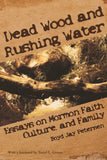 |
Dead Wood and Rushing Water: Essays on Mormon Faith, Culture, and Family $22.95 paperback |
 |
Mr. Mustard Plaster and Other Mormon Essays $20.95 paperback |
 |
Writing Ourselves: Essays on Creativity, Craft, and Mormonism $18.95 paperback |
 |
On the Road with Joseph Smith: An Author's Diary $14.95 paperback |
 |
Hearken O Ye People: The Historical Setting of Joseph Smith's Ohio Revelations $34.95 hardcover |
 |
Fire and Sword: A History of the Latter-day Saints in Northern Missouri, 1836–39 $36.95 hardcover |
 |
A House for the Most High: The Story of the Original Nauvoo Temple $29.95 paperback |
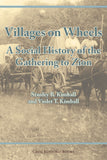 |
Villages on Wheels: A Social History of the Gathering to Zion $24.95 paperback |
 |
Mormonism in Transition: A History of the Latter-day Saints, 1890–1930, 3rd ed. $31.95 paperback |
Day 11 — International Mormonism
 |
Tiki and Temple: The Mormon Mission in New Zealans, 1854–1958 $29.95 paperback |
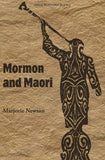 |
Mormon and Maori $24.95 paperback |
 |
The Trek East: Mormonism Meets Japan, 1901–1968 $39.95 paperback |
 |
From Above and Below: The Mormon Embrace of Revolution, 1840–1940 $34.95 paperback |
 |
The History of the Mormons in Argentina $24.95 paperback |
 |
For the Cause of Righteousness: A Global History of Blacks and Mormonism, 1830–2013 $32.95 paperback |
Author spotlight: Julie M. Smith November 08 2017
 |
|||||||
|
Julie M. Smith, author of Search, Ponder, and Pray: A Guide to the Gospels, part of the Contemporary Studies in Scripture series, and editor of As Iron Sharpens Iron: Listening to the Various Voices of Scripture, winner of the 2016 AML best religious non-fiction award. When and how did you decide to pursue religious studies and Biblical Studies? What is your emphasis in Biblical Studies? I was in college, at UT Austin, as an English major. And I was taking a British literature class from a professor who wanted us to understand the religious backdrop to what we were reading. I was fascinated by her brief description of early Christianity, and that began my interest. Within Biblical Studies, I have two main focal points of interest. The first is what I can non-androcentric interpretation. While I'm comfortable using the word "feminist" in other contexts, in this context I like "non-androcentric" because what I am striving to do is to remove a male focus from interpretation (not necessarily to replace it with a feminist ideology). Secondly, I am interested in literary interpretation. In what ways do you think Search, Ponder, and Pray and As Iron Sharpens Iron can help Latter-day Saints gain a deeper appreciation for and understanding of scripture? Search, Ponder, and Pray presents some background material and then it leaves the reader to reach her own conclusions. I'm trying to model a process there that I hope all teachers would use. But I'm also trying to give students of the scripture some tools with which to do their own thinking about what they are reading. Similarly, with the Iron book, the goal was to present two not-necessarily-harmonious viewpoints about an issue, each couched in the voice of a scriptural author, in order to get the reader thinking about various arguments. You have taught LDS seminary. If those in charge of seminary curriculum came to you for advice in shaping future instruction manuals and training, what advice would you offer? I haven't taught seminary in a long time. But my advice for seminary curriculum would be this: y'all did a great job on the church history side in being sure that our youth are exposed to the difficult issues in church history in a faithful context so that they won't be blindsided by these issues when they are older. Now we need to do that for the Bible as well. Our materials on the Old and New Testament read as if they were written in the late 19th century. We saw the need to update church history materials to address 21st century needs--the next step is to make the same changes for our Bible curriculum. Thanks, Julie! |
|||||||
|
Free Scriptural Theology ebook for newsletter subscribers! October 30 2017
FREE EBOOK FOR NEWSLETTER SUBSCRIBERS
Perspectives on Mormon Theology: Scriptural Theology
Edited by James E. Faulconer and Joseph M. Spencer
Part of the Perspectives on Mormon Theology series
$24.95 FREE FOR OUR NEWSLETTER SUBSCRIBERS (Limited time)
Greg Kofford Books is pleased to offer for a limited time a free ebook version of Scriptural Theology, the first volume in the Perspectives on Mormon Theology series.
This volume is edited by James E. Faulconer and Joseph M. Spencer and seeks to offer a variety of perspectives regarding the nature and meaning of scripture for Latter-day Saints.
Book description:
The phrase “theology of scripture” can be understood in two distinct ways. First, theology of scripture would be reflection on the nature of scripture, asking questions about what it means for a person or a people to be oriented by a written text (rather than or in addition to an oral tradition or a ritual tradition). In this first sense, theology of scripture would form a relatively minor part of the broader theological project, since the nature of scripture is just one of many things on which theologians reflect. Second, theology of scripture would be theological reflection guided by scripture, asking questions of scriptural texts and allowing those texts to shape the direction the theologian’s thoughts pursue. In this second sense, theology of scripture would be less a part of the larger theological project than a way of doing theology, since whatever the theologian takes up reflectively, she investigates through the lens of scripture.
The essays making up this collection reflect attentiveness to both ways of understanding the phrase “theology of scripture.” Each essay takes up the relatively un-self-conscious work of reading a scriptural text but then—at some point or another—asks the self-conscious question of exactly what she or he is doing in the work of reading scripture. We have thus attempted in this book (1) to create a dialogue concerning what scripture is for Latter-day Saints, and (2) to focus that dialogue on concrete examples of Latter-day Saints reading actual scripture texts.
Contributors: James E. Faulconer, Joseph M. Spencer, Robert Couch, Adam S. Miller, Eric D. Huntsman, Claudia L. Bushman, Bruce W. Jorgensen, Jane Hafen, Jenny Webb, George B. Handley
Subscribe to our free newsletter by entering your email address above and receive instructions for downloading your free ebook.
Once you have signed up for our newsletter, you will recieve a welcome email that will provide instructions for downloading the ebook. Please read these instructions carefully. Check your junk folder if you do not see the welcome email.











